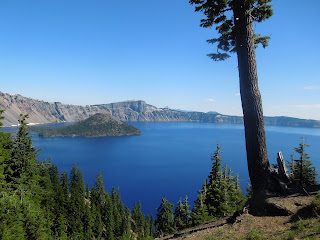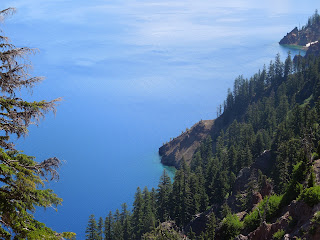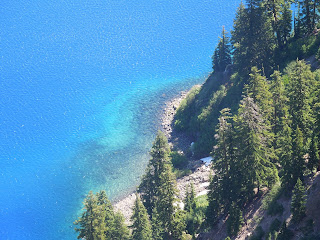Yosemite Valley. El Capitan. Half Dome. Cathedral Rock. Camp 4. The Nose Speed Record. Royal Robbins. Yvon Chouinard. Doug Tompkins. Hans Florine. Dean Potter. Alex Honnold.
These names are synonymous with rock climbing, and they became forged in granite at Yosemite. Welcome to the birthplace of modern American rock climbing. Historic first ascents, big walls and large cojones became the norm in The Valley in the 1960's when Royal Robbins and his crew started putting up routes on Half Dome and El Cap. Chouinard and Tompkins, founders of ubiquitous outdoors brands Patagonia and The North Face, cast their own pitons and other climbing gear and spent weeks hanging out, bivouacked on the side of the granite goliath's iconic crags. Then came the speed record on The Nose route of El Capitan. You can do your own research on it for the back-and-forth history of this exciting race to the top. Recently, any news concerning the speed record has been dominated by Hans Florine and Dean Potter. These two whacky climbers continually seek out new partners in competition for the speed record. Some periods saw the record swap ownership only days apart. The newest honors, chiseled in proverbial stone on June 17th, weeks before we arrived in Yosemite, went to Hans Florine and insane free soloist Alex Honnold, who flew up the route in 2 hours, 23 minutes and 46 seconds. This record is only 13 minutes faster than Dean Potter and Sean Leary's ascent from 2010. Most competent climbers take several days to ascend the 3,000 foot vertical face of The Nose.
The scene in The Valley today is quite pedestrian compared to the climbing revolution of the last century. Long gone are the days of dirtbags stacked like sardines in Camp 4, partying till sunrise, sweating out the cheap whiskey while clad in neon lycra on the sunbaked, granite slabs just East of El Cap. Nowadays, health-conscious climbers slam shots of wheat grass and discuss the advantages of being vegan before hitting the sack at 9 p.m. We were some of the only climbers around, as we learned summer climbing in Yosemite is mostly a no-go. Sun exposure is all-day on El Cap and its lesser walls, and Tuolumne Meadows is quite buggy. Summer in Yosemite Village is tourist season - prime hunting time to scope out heavy people donning khaki shorts and hiking boots, protected by floppy brim hats and stripes of sunscreen on their noses. These people look fresh out of a plus-size Columbia catalogue, their clothes freshly-creased and boots not broken in. Sure, we sound cynical, but when a family decked out in full safari clothing asks you what there is to do in Yosemite and punctuates the inquiry by stating that they don't want to have to hike to anything, it's open season on the Yosemitus Baffoonus - the scientific name for the posing outdoorsman. If you can stomach the traffic jams, outrageous prices (gas in the valley was 7 bucks a gallon), and inability of people to walk in single file on thin trails, Yosemite is a strikingly gorgeous example of geology; a cathedral to the rock gods; a place to find inspiration on even the most hot and crowded days.
Our week in The Valley was not the typical experience. It's very difficult to bum it in a national park - campgrounds are by reservation and can be pricey, and dispersed camping (setting up a tent anywhere you damn well please) isn't allowed. We were visiting friends who are employees of the park, which means employees of Delaware North Companies - a corporation outsourced from the Park Service that has capitalized and commercialized the park to ridiculous levels. Employees rest their heads in wooden houses called WOBs (without bathrooms) or canvas tents, and fraternization with nonemployees is not allowed in the camp. We had to dodge park rangers and sneak into pine saplings to sleep on the banks of the Merced River. This was cool and quite fun the first few nights, but after word of some fellow bums getting fined and a general crowding of the known-but-not-discussed area forced us out and north to quieter country. One night found us outside the park's boundaries, sleeping roadside in the van. All complaints aside, we had some wonderful moments. A kind and very interesting employee took us to a hidden spot at the end of The Valley which doesn't appear on any map and would never be discovered by the throngs of camera-toting meanderthals (meandering neanderthals) who never venture off the paved trails. It was an area atop a pristine waterfall, situated on a granite slab with eroded dips the size of small hottubs. A tributary to the Merced filled these tubs with the crystal clear, 53 degree water. Piles of watermelon sized rocks at the top of the slab allowed one to direct the flow of the stream, filling different holes on the rock as the stream flow changed. For the sake of keeping this amazing spot secret and undeveloped, you'll have to seek it out on your own. Having our bikes in The Valley was extremely convenient, and evening bike rides along the Merced or to the base of El Cap were my favorite moments.
Climbing in Yosemite - it's a privilege, albeit a damn difficult one, to do so in such a historic place. Getting to the routes, finding the routes, and climbing them all had their obstacles. Ratings are notoriously sandbagged here, meaning harder than one would imagine given a rating system that is supposed to be consistent. Getting halfway up a route, and realizing that it's several grades above what you were expecting is always interesting. Our initial foray onto the granite found us in the High Sierras, thousands of feet above the tranquil musings of The Valley, in Tuolumne Meadows. Large granite domes rise out of the high plains here, giving the landscape a surreal feel - especially during sunset. The climbing at the wall we did find involved intriguing moves on radio knob-sized quartz crystals, jutting out of a seemingly featureless granite face. The next day we dropped back down to The Valley, in search of a shaded face called Mecca. We ended up on a highly-recommended classic route put up by Royal Robbins, graded 5.10c. Eric said it climbed like an 11b - I cleaned the route, and it definitely put me to work. The route found anchors on a large ledge with an uninterrupted view of the entire vertical expanse of El Capitan. Breathtaking and inspiring were the words of the day.
Eventually, we became irritated by the crowds, annoyed by the lack of sleeping opportunity, and tired of approaching low-angle climbs in the hot sun. We learned our lessons - do Yosemite in the spring or fall, and spend more time in the High Country. Personally, The Valley left me wanting something I'll never experience - seeing the entirety of this natural treasure as John Muir once saw it. No paved roads, no Ahwahnee Hotel, no nothing. Just the meandering Merced, snaking its way down the avenue of sky scraping granite, in complete silence. The Yosemite experience has filled my head with conflicting thoughts about the Park Service, about national parks, and about the public awareness of these places in general. Ultimately, The Valley is truly a magical place where one can feel belittled and humbled by the sheer scale of things. Eric and I plan to return one day, as better climbers, in a different season, to risk it all on El Cap as the ultimate sacrifice to the rock gods. Redemption at the Pantheon, indeed.


















































